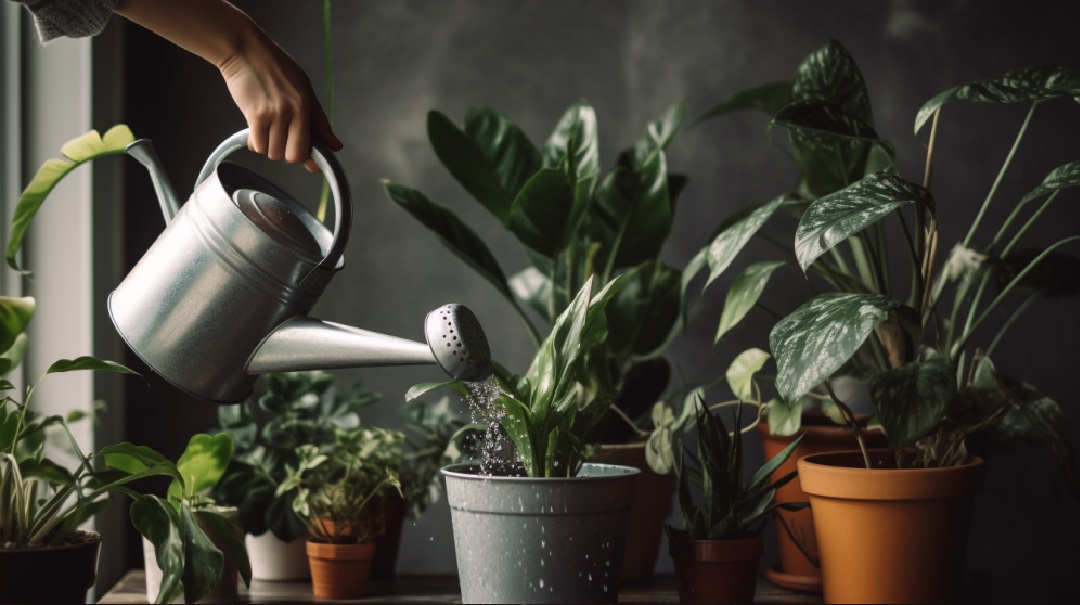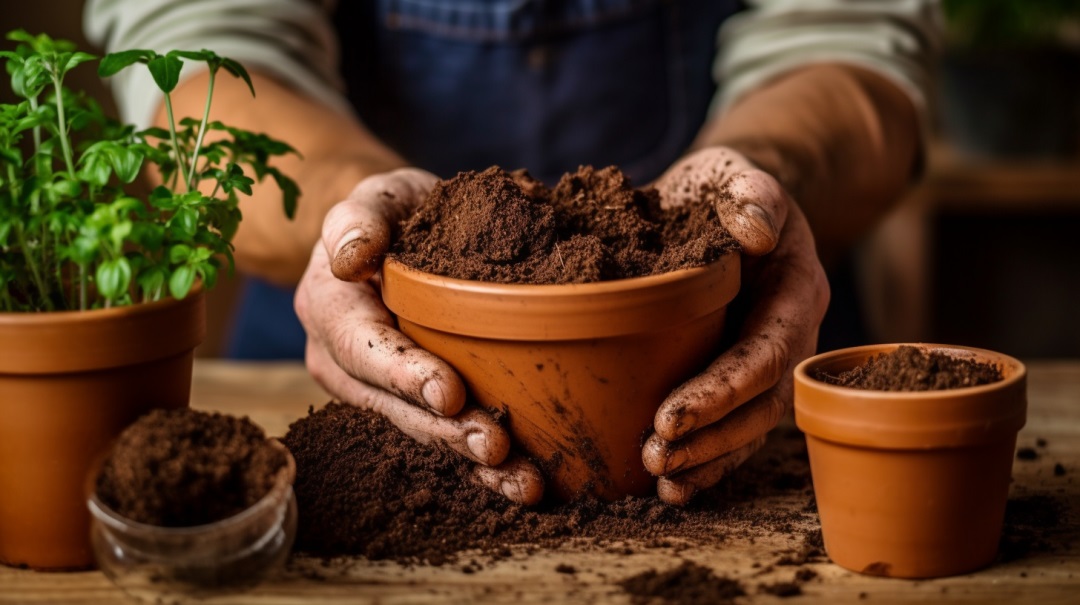Filling your home with lively plants can seem daunting as a new plant parent, but growing indoor houseplants can be an extremely enjoyable, rewarding hobby – even for total beginners! The key is choosing easy-care varieties suited for novice gardeners. This comprehensive guide will teach you how to successfully grow 10 of the top-rated houseplants for plant care beginners.
Why Add Indoor Houseplants?
Cultivating indoor greenery offers many benefits:
- Interacting with plants can lower stress, elevate mood, and provide a therapeutic outlet.
- Houseplants increase oxygen, decrease toxins, and purify the air in your home.
- Vibrant indoor plants bring natural beauty and life to any space.
- Nurturing your own indoor garden can be deeply fulfilling and relaxing.
Let’s explore some great starter houseplants to grow as a beginner!
Snake Plant – An Architectural and Resilient Choice
With its upright sword-shaped leaves, the snake plant is often recommended for indoor plant beginners. Snake plants are hardy houseplants that tolerate neglect, low light levels, and sporadic watering that kills more delicate varieties. The snake plant’s dramatic architectural foliage adds bold vertical shapes and clean lines.
Growing Snake Plants Indoors
Snake plants adapt readily to conditions inside your home. Allow the top couple inches of soil to dry out completely before watering to prevent root rot. In the winter growing season, reduce watering frequency since growth naturally slows. With simple care, snake plants can thrive indoors for many years.
More Snake Plant Care Tips:
- Provide temperatures between 60-80°F.
- Dust leaves occasionally to allow proper light absorption.
- Divide congested plants to rejuvenate them.
- Cut off any dead or yellowing leaves near the base.
- Repot every 2-3 years in a well-draining potting mix.
Pothos – A Classic and Versatile Trailing Houseplant
With its cascading vines and variegated heart-shaped leaves, golden pothos is an extremely popular houseplant. Nicknamed “devil’s ivy,” it tolerates low light and occasional missed waterings that would kill other varieties. Pothos looks lovely spilling from hanging baskets or climbing up trellises.
Caring for Pothos:
Situate pothos in bright, indirect light for the best results. Only water thoroughly once the top 1-2 inches of soil has dried out. Always drain excess water from the saucer. Enjoy average household humidity around 40-60%. Prune back any long vines to control size.
More Pothos Care Tips:
- Wipe dust off leaves periodically to allow proper photosynthesis.
- Mist leaves if humidity drops below 40% to boost moisture.
- Repot every 2-3 years in a well-draining potting mix.
- Rotate the plant regularly to promote even, balanced growth.
ZZ Plant – A Resilient and Low Maintenance Indoor Plant
The ZZ plant is an unfussy indoor plant praised for tolerating inconsistent watering and low light conditions. It has waxy, oval-shaped deep green leaves that emerge from thick underground rhizomes and stems. This resilience makes it a great houseplant for beginners prone to overwatering or underwatering.
Growing ZZ Plants Indoors
ZZ plants adapt well to medium-bright indirect light but also do fine in low light areas. Allow the top few inches of soil to completely dry out before watering thoroughly. Reduce watering frequency in winter when growth slows. Ideal temperatures are 60-80°F.
More ZZ Plant Care Tips:
- Dust leaves periodically to allow proper photosynthesis.
- Repot every 2-3 years in fast-draining potting mix.
- Prune off any dead or dying leaves at the base.
- Mist leaves occasionally to increase humidity.
- Propagate by dividing rhizomes or taking leaf cuttings.
Cast Iron Plant – An Undemanding and Durable Foliage Houseplant
As its name implies, the cast iron plant is nearly indestructible and can tolerate very low light and inconsistent watering. This easy-care houseplant has wide, elegant lance-shaped dark green leaves that emerge tidily from the soil in a vase shape.
Easy Care Tips for Cast Iron Plants:
Cast iron plants grow well in low to medium indirect light indoors. Allow the top half of the soil to dry before watering thoroughly. Maintain average humidity around 40-50% and wipe dust off the leaves occasionally. Repot every 2-3 years in well-draining potting soil.
Additional Cast Iron Plant Care Tips:
- Remove yellowing leaves promptly to keep it looking neat.
- Avoid hot or cold drafts which can damage leaves.
- Mist occasionally to increase moisture around the foliage.
- Keep soil consistently moist but not soaked.
Rubber Plant – A Houseplant with Dramatic Colored Foliage
Adored for its large, glossy burgundy leaves that add pops of color indoors, the rubber plant thrives with minimal regular care and slow growth. These traits make it a fabulous no-fuss houseplant for beginners who appreciate bold, dramatic foliage.
Caring for Rubber Plants:
Rubber plants thrive in bright, indirect light, away from direct sun. Allow the top couple inches of soil to partially dry before watering thoroughly. Dust the leaves often with a soft cloth to prevent dullness and promote photosynthesis. Repot every 2 years in fresh, well-draining soil.
Additional Rubber Plant Care Tips:
- Mist leaves occasionally to increase humidity.
- Avoid hot or cold drafts which can damage leaves.
- Propagate new rubber plants from stem tip cuttings.
- Wipe leaves regularly to remove dust so they photosynthesize properly.
Spider Plant – A Fun and Adaptable Trailing Indoor Plant
An excellent indoor plant for beginners, the spider plant readily adapts to varied home conditions. This fun trailing plant produces arching ribbon-like foliage and baby spiderettes on offshoots that can easily root in water.
Growing Spider Plants:
For best results, place your spider plant in bright, indirect light. Only water after the top inch of soil has dried out. While they tolerate average humidity, occasional misting is beneficial. Trim off any brown tips as needed.
More Spider Plant Care Tips:
- Divide congested plants to rejuvenate overcrowded roots.
- Repot every 2 years in fresh, well-draining potting mix.
- Flush the soil periodically to prevent salt buildup.
- Dust the leaves occasionally to promote healthy growth.
Jade Plant – A Resilient and Lucky Indoor Succulent
Native to Africa, jade plants have rounded, fleshy leaves and thick woody stems. Their succulent properties make them easy to care for houseplants – they tolerate periodic droughts and occasional overwatering quite well. The jade plant is also considered lucky.
Caring for Jade Plants:
Provide jade plants with several hours of morning sunlight indoors, away from intense afternoon rays. Allow the soil to completely dry out before soaking thoroughly. Maintain average indoor humidity around 40-50% and temperatures above 55°F.
Additional Jade Plant Care Tips:
- Use fast-draining cactus/succulent soil mix.
- Repot every 2-3 years in a container one size larger.
- Dust the leaves and prune off any dead branches.
- Mist leaves occasionally to boost humidity.
- Propagate new plants by taking stem cuttings in spring or summer.
Peace Lily – A Graceful and Forgiving Flowering Indoor Plant
Extremely popular, the peace lily is loved for its lush dark green leaves and elegant white blooms that arise in cycles throughout the year. Peace lilies are straightforward, forgiving plants if you occasionally miss a watering.
Growing Peace Lilies:
Peace lilies thrive in medium to bright indirect sunlight near an east or west facing window. Only water again after the top inch of soil has dried out. Mist the leaves daily to increase humidity. Ideal temperatures are 65-80°F.
Additional Peace Lily Care:
- Wipe dust off the leaves periodically to allow photosynthesis.
- Remove any spent blooms or yellowing leaves promptly.
- Repot every 2 years in fresh, well-draining soil.
- Propagate by dividing at the root ball during repotting.
Chinese Money Plant – A Vibrant and Simple to Grow Indoor Plant
The Chinese money plant features vibrantly colored coin-shaped chartreuse foliage on long arching stems. It adds a fun pop of color to any indoor space. This easy-care plant adapts readily to average home conditions.
Caring for Chinese Money Plants:
Situate your money plant in bright, indirect light indoors. Allow the top couple inches of soil to partially dry before watering thoroughly. Occasionally mist and wipe the leaves to remove dust. Repot every 2 years in fresh, well-draining soil. Prune off any dead or dying stems.
Additional Chinese Money Plant Care:
- Propagate new plants by taking 4-6 inch tip cuttings in spring or summer.
- Avoid cold or hot drafts which can damage the foliage.
- Dust leaves periodically to promote healthy growth.
- Reduce watering frequency in winter when growth slows.
Aloe Vera – A Beginner-Friendly Indoor Succulent
A sun-loving succulent needing minimal care once established, aloe vera is prized for the medicinal gel inside its plump, pointed leaves. With proper light and care, it can thrive indoors.
Growing Aloe Vera:
Situate your aloe vera in a bright, sunny south-facing window. Allow the soil to completely dry before watering thoroughly to prevent rot. Provide temperatures between 70-90°F. Repot annually in cactus/succulent soil. Remove offsets for propagating new plants.
Additional Aloe Vera Care Tips:
- Use terra cotta pots and porous, well-draining soil.
- Don’t overwater, as aloes are prone to root rot.
- Dust leaves occasionally to promote healthy light absorption.
- Reduce watering and fertilizer in winter when growth slows.
By selecting these easy-going plants suited for beginners, you can enjoy the many benefits of houseplants with minimal required maintenance. Observe your plants closely and adjust care as needed. Soon you’ll master the art of growing thriving indoor plants!
Frequently Asked Questions About Caring for Beginner Houseplants
What are some good indoor houseplants for beginners?
Some of the best indoor houseplants for beginners include snake plant, pothos, ZZ plant, peace lily, orchid, Chinese money plant, spider plant, succulents like jade plant or aloe vera, philodendron, dracaena, and aglaonema. These varieties tend to be resilient, adaptive to various indoor conditions, and easier to care for.
How often should I water indoor houseplants?
Watering frequency depends on the plant variety, its soil, lighting conditions, time of year, and other factors. As a general rule, water most houseplants once the top inch or two of soil has dried out. Wait until the pot feels lighter when lifted and the soil is dry below the surface.
What types of light do indoor houseplants need?
Most houseplants need bright, indirect light to thrive indoors. Some varieties like cacti and succulents prefer several hours of direct sun. Avoid hot, harsh midday light that can scorch leaves. East or west facing windows are ideal for providing the right balance of light for many indoor plants.
How can I increase humidity for my indoor houseplants?
Use a humidifier near your plants, place pots on a pebble tray with water, or mist leaves frequently to increase humidity. Bathrooms and kitchens tend to have more ambient moisture. Group plants together to create a humid microclimate.
What temperature is best for indoor houseplants?
Ideal temperatures for most indoor houseplants range from 65°F to 80°F during the day and above 55°F at night. Avoid cold drafts from windows and heating/cooling vents. Move plants away from hot radiators or fireplaces.
How often should I fertilize indoor houseplants?
During the active growing season in spring and summer, fertilize monthly using a balanced diluted liquid fertilizer. Reduce feeding in fall and winter when growth slows. Follow package directions to avoid fertilizer burn. Slow release granular fertilizer applied in spring can provide nutrients gradually.
What soil mix should I use for houseplants?
Use a general potting soil with ingredients like peat moss, perlite, vermiculite or bark to allow drainage and aeration. For cacti and succulents, choose a potting mix made especially for them. Soil for orchids features fir bark. African violets need a lightweight mix.
When should I repot my indoor houseplants?
Most houseplants need repotting every 2-3 years in fresh potting mix to provide nutrients and room for roots to grow. Repot in the spring before active growth resumes. Choose a pot one size larger and gently loosen bound roots before replanting at the same depth.
How can I propagate new plants from my indoor houseplants?
Many houseplants can be propagated by taking stem-tip or leaf cuttings and rooting them in water or potting mix. Snake plants and pothos can grow new plants when stem divisions are replanted. Spider plants form babies that can be removed and potted up.
Final Thoughts on Caring for Beginner Houseplants
Bringing plants indoors is an enjoyable, rewarding hobby for gardeners of all skill levels. Don’t let a lack of experience stop you from filling your home with lively greenery. By starting with resilient, beginner-friendly varieties, growing houseplants is easy to master.
Be sure to research the specific care needs, proper lighting, ideal temperatures, and preferred watering frequency for any new plant you bring home. Pay close attention and learn to recognize when your plants need adjustments in sunlight, nutrients, moisture or care. Making informed changes based on each plant’s condition is the key to success.
With attentive, hands-on practice you’ll be able to keep your new houseplants healthy and flourishing for years to come. Let your exciting indoor gardening journey begin!



Leave a Reply